To make a banjo, you’ll need a piece of hardwood for the neck, and some scraps of plywood or any boards for the body. And some goatskin.
Make a box, and cut two notches that match the width and depth of the piece you’re using for the neck:

Make sure the neck piece fits snugly. Before you attach it to the box, you’ll need to refine it a bit.

Use a file, a saw or a rasp to remove some wood in the part of the neck that will be inside the box. You will be putting skin over the top eventually, and there needs to be some space between the neck-piece and the skin. While you’re at it, round off the sides of the neck-piece where you’ll be holding it while playing, and sand them smooth. Drill some holes at the far end of the neck for tuning pegs. There is a tool called a reamer, which makes tapered holes. It’s a good thing to have in in your toolbox. You can whittle a piece of wood into a roughly tapered peg; put a piece of sandpaper in the tapered hole you’ve made with your reamer, and it’ll shape itself nicely. Remember, people have been doing stuff like this for thousands of years. Add an extra little piece of wood just ahead of the tuning pegs; the strings will go over this (it’s called the nut, by the way).
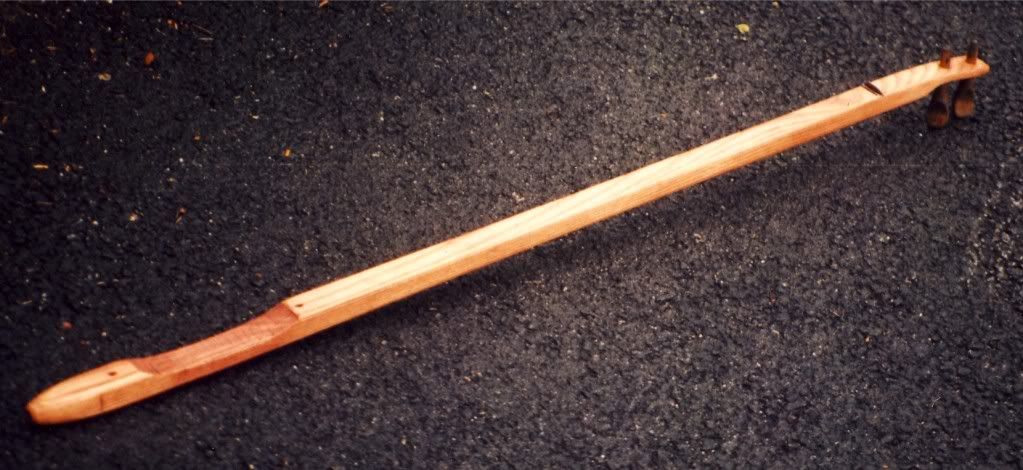
Glue and screw the neck into place, and attach the skin just as if you were making a drum. Let it dry for 24 hours.
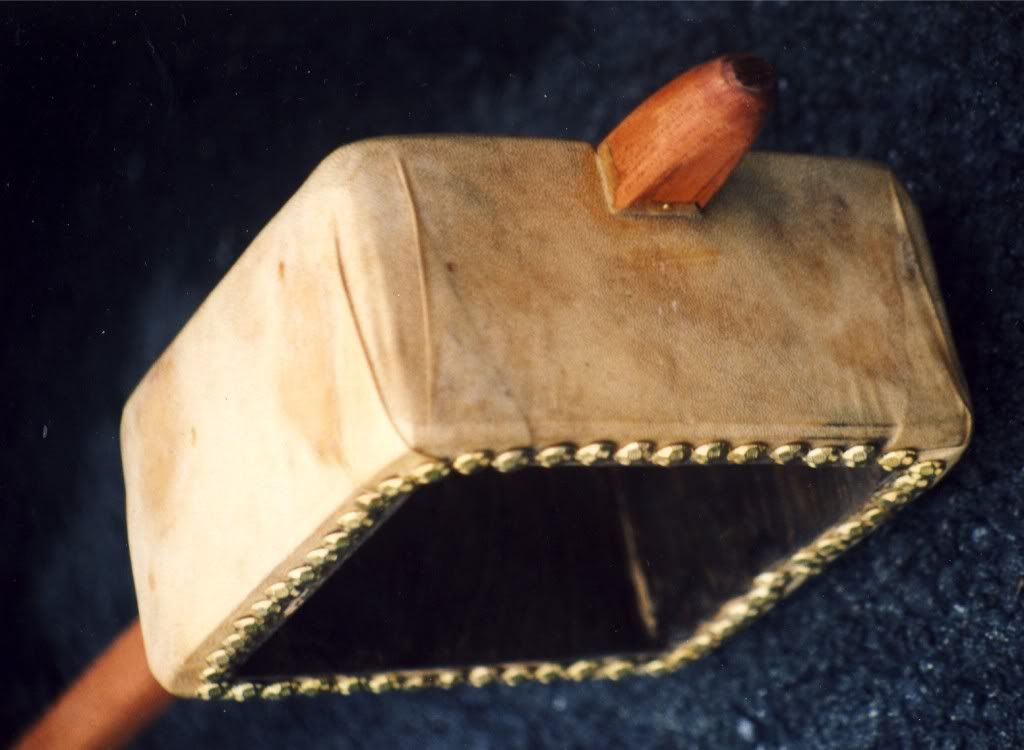
I had a little scrap of ebony lying around that I used for a bridge, but really any small piece of wood will do just fine. Many of the stringed instruments I make are fretless; this one has tied frets made of waxed thread. Sometimes I make tied frets from a readily available organic string which grows wild in Montana.
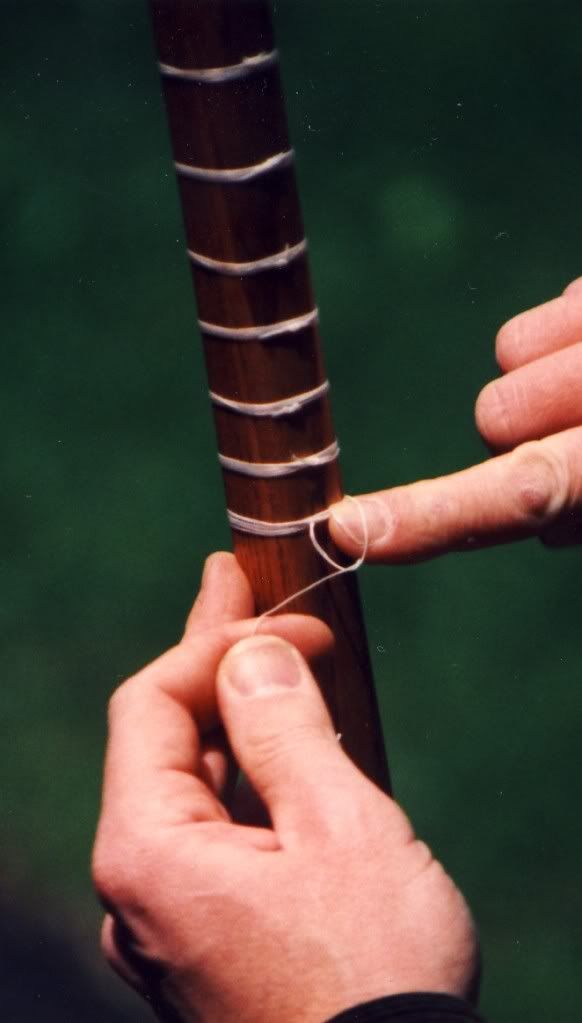
For strings, I used monofilament nylon fishing line. It sounded great.
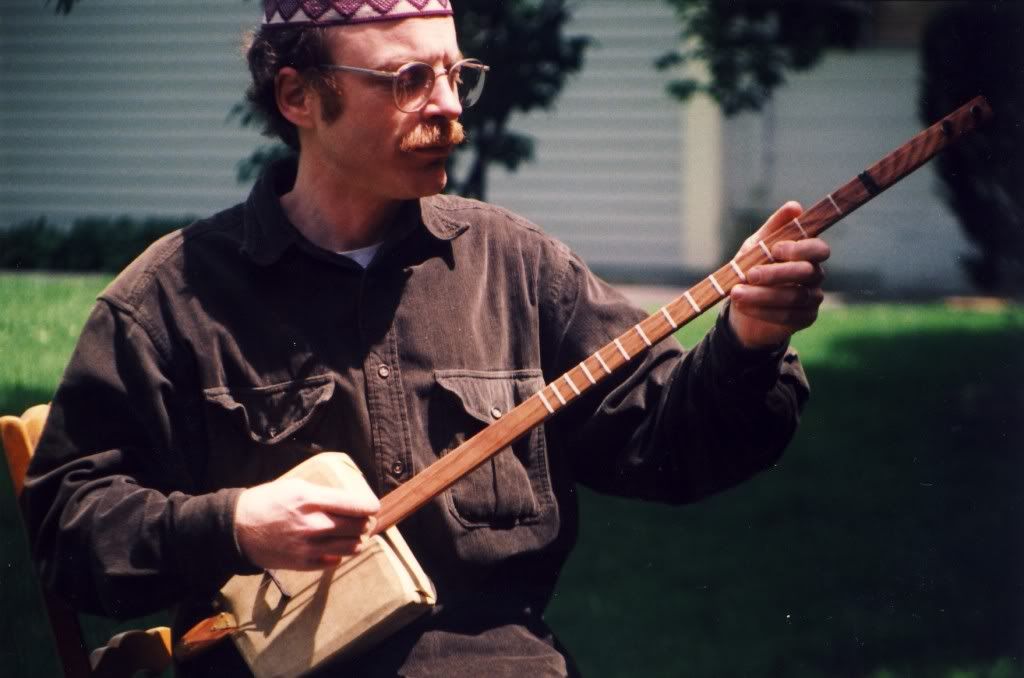
Here are some of my students with banjos they’ve made:

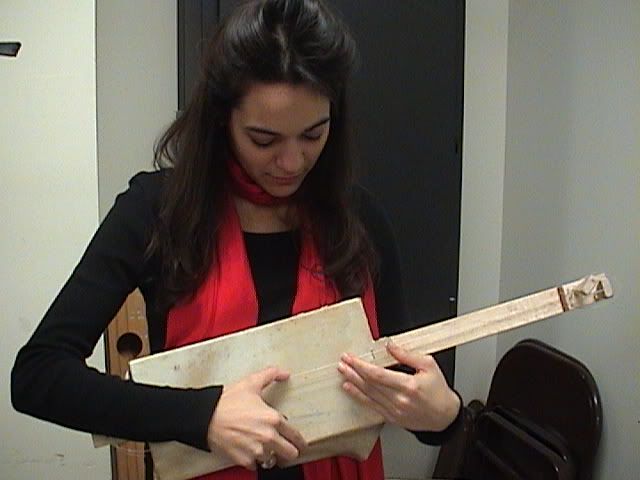
———————————————-
Now understand me: the goal of all this is not to be a great virtuoso, or to sell your instruments to the world, or to attract the applause of your audience. The goal of all this is to do it yourself. Because once you make an instrument yourself, as Lou Harrison said, you’ll learn more than you ever imagined possible. If you do it with a child, what do you think they’ll learn as they watch? Once you start doing this, the world will be full of musical resources for you.
I don’t give a damn if you think you’re “tone-deaf” or “unmusical.” Nine-hundred-ninety-nine thousand, nine-hundred-and-ninety-nine times out of a million, that’s not true. Our culture has commodified music, turning it into a consumer good that’s produced by a specialized, isolated occupational subcategory. In cultures where that hasn’t happened, everybody sings and plays music. And where everybody sings and plays music, people (even people with few or no possessions) are happier; their communities are more robust; they treat one another better. The loss of communal musicking in our civilization is a profound tragedy, one of the greatest losses in the wake of the cultural bulldozer.
And there’s another reason. America is number one in the world when it comes to making trash, which is another way of saying subtracting value from stuff. We USA folks are more effective than any other culture in the world at making things valueless. Making musical instruments from things other people throw away is a way of adding value to stuff.
———————————————-